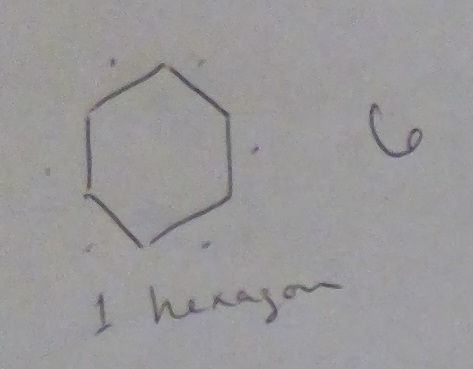More Water Jug Fractions
- Matt Felton-Koestler
- Aug 24, 2017
- 4 min read
After solving the previous problem, I told Parker I was going to give him something more challenging (take a minute and try to solve it yourself—as you might expect, I suggest the use of a picture):
You are going on a long hike. You have 4 jugs of water. Each day you need to drink 3 fourths of a jug of water. How many days can you hike before you have to refill?
After some debate over whether he should just build off his old picture or start new, Parker made the drawing below (I added the grey part that says "third" and "fourth" later in our conversation).

Parker's drawing for a 5 ÷ 3/4 story problem
What's the Answer?
Parker's first answer was 5. You can hike for 5 days in this scenario. So I said, "but you have this water here left over. Pretend you can walk for just part of a day. How long could you walk total?" Then Parker spent a lot of time going back and forth between two very common answers to this problem:
"5 and 1 fourth" and "5 and 1 third"
Parker asked me which it was, and I said... wait for it... "what do you think?"
Think for a minute about (a) why each answer might make sense from a certain point of view, and (b) which one is the "correct" answer and why. In a classroom, a debate over these two answers would be important. Not everyone would understand the first time through, and that's okay. By doing multiple problems and by sharing and discussing their strategies, different representations, and thinking, students will slowly build their understanding of fractions.
Since you're not taking a course with me, I'm just going to tell you how I think about this problem (gasp!).
5 and 1 fourth makes sense because you can hike for 5 days and you'll have 1 fourth of a jug of water left over.
5 and 1 third makes sense because you can hike for 5 days and 1 third of a day. It takes 3 fourths of a jug of water to hike a day, so 1 fourth of a jug of water will get you through 1 third of the day. Check out my sweet picture below breaking this down.

So, because the question asked "how many days can you hike", and because we allowed for fractional days, the "correct" (school) answer is "5 and 1 third days".
Tools, Modification, Assistance
I didn't mention this last time, but Parker asked me to write the green lines and numbers (he still drew the four water jugs and subdivided them into fourths). I think he asked because his writing isn't perfect and it was frustrating him. So I did (he pointed and told me exactly where to draw everything).
I could have said "no, you have to do it", but I chose not to for a couple of reasons. First, and foremost, it doesn't detract from Parker's mathematical thinking. The math I'm interested in doesn't have to do with how well Parker can draw lines and write numbers. Second, I always want our math to be fun and positive, so if he's getting frustrated and turned off by part of it I want to find a work around. If the work around meant I was doing the math and Parker wasn't, then I would tell him I couldn't help because then I'd be doing the problem. But I'd also say "this is just for fun; if you don't want to do it we don't have to." I've said that before and we've stopped problems when Parker's not in the mood. Obviously, this is a luxury a parent has at home that a teacher in the classroom does not always have (although giving choices about how to approach the math and what strategies to do does help in giving children a sense of control and ownership over the math they learn in school).
Where the Math Goes From Here
Last time I mentioned that fraction division can (and should) come before adding and subtracting fractions. I don't mean this as a hard and fast rule, but just to point out that there's more than one way to come at mathematics. I also said that doing division problems can help build an understanding of equivalent fractions—different names for the same quantity (like "2 fourths" and "1 half")—which lays the foundation for dealing with common denominators with understanding. You may recall that common denominators are critical to adding and subtracting fractions. The way they are typically taught is that if you have, say "½ - ¼", you are supposed to first create common denominators, which would be "2/4 - ¼". [Sorry there's no fancy "2/4" character.] This is a frequent point of confusion and frustration for children and teachers when it is taught as just a procedure to memorize and follow, because it's not based on meaning or understanding.
If I change the water jug problem to read as follows, then children (when they're ready) will start to develop strategies for making equivalent fractions all on their own. Especially if they have had lots of opportunities to rename fractions and discuss different names for fractions in earlier work.
You are going on a long hike. You have 1 and 1 third jugs of water. Each day you need to drink 1 half of a jug of water. How many days can you hike before you have to refill?
When you approach fractions in this way, equivalent fractions and common denominators are a natural outgrowth of children's thinking instead of an artificial procedure imposed on them.
Reflection (post a comment!)
How do you feel about the two answers to the water jug problem and my explanation for which is "correct"?
How would you solve the last problem?


Comments